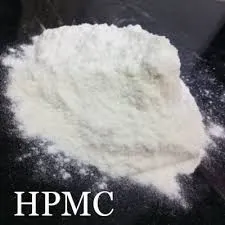
نوامبر . 16, 2024 11:24 Back to list
Hydroxypropyl Methyl Cellulose Suppliers and Manufacturers in China for Various Applications
Understanding Hydroxypropyl Methyl Cellulose (HPMC) and Its Applications
Hydroxypropyl Methyl Cellulose (HPMC) is a semi-synthetic polymer derived from cellulose, widely utilized in various industries due to its versatile properties. HPMC is a white to off-white powder that is non-toxic, biodegradable, and soluble in water, making it an attractive choice for many applications, from construction to pharmaceuticals.
Manufacturing of HPMC in China
China is one of the largest manufacturers of HPMC, leveraging its advanced chemical processing technologies and abundant raw materials. Leading HPMC manufacturers in China are known for their ability to produce high-quality products that meet international standards. These manufacturers often employ rigorous quality control measures and advanced production techniques, ensuring that their HPMC products exhibit the desired characteristics, such as viscosity, solubility, and water retention.
The production process of HPMC involves the reaction of cellulose with propylene oxide and methyl chloride. The resulting modifications enhance the cellulose's properties, providing valuable attributes such as improved adhesive qualities, increased film-forming capabilities, and enhanced gel-forming abilities. As a result, HPMC finds its way into various formulations across different industries.
Applications of HPMC
1. Construction Industry In construction, HPMC serves as a vital additive in cement, mortars, and plasters. It improves workability, enhances water retention, and extends the open time of construction materials, allowing for more extended manipulation and better bonding.
china hpmc-hydroxypropyl methyl cellulose manufacturer

2. Pharmaceuticals HPMC is extensively used as an excipient in the pharmaceutical industry. It acts as a binder, thickener, and controlled-release agent in tablets and capsules. Its non-toxic nature makes it an ideal choice for drug formulations, particularly in controlled release and sustained release systems.
3. Food Industry In the food sector, HPMC is employed as a thickening agent and stabilizer in a variety of products, including sauces, dressings, and baked goods. Its ability to improve texture and viscosity while maintaining the sensory qualities of food products is highly valued.
4. Cosmetics and Personal Care HPMC is also used in cosmetics and personal care products for its thickening and emulsifying properties. It helps improve the texture and spreadability of creams and lotions, enhancing the overall user experience.
5. Paints and Coatings In the paints and coatings industry, HPMC serves as a thickening agent, improving flow and leveling characteristics. Its use results in products with enhanced stability and performance.
Conclusion
As the demand for high-quality, multipurpose materials continues to grow, the role of Hydroxypropyl Methyl Cellulose becomes increasingly significant. Chinese manufacturers are at the forefront of HPMC production, providing a wide variety of grades tailored to meet the specific needs of various industries. By continuing to innovate and improve production techniques, these manufacturers contribute to the advancement of applications utilizing HPMC, ensuring safer, more effective products in construction, pharmaceuticals, food, cosmetics, and more. As industries evolve, HPMC will likely play an integral role in developing sustainable and efficient solutions worldwide.
-
Versatile Hpmc Uses in Different Industries
NewsJun.19,2025
-
Redispersible Powder's Role in Enhancing Durability of Construction Products
NewsJun.19,2025
-
Hydroxyethyl Cellulose Applications Driving Green Industrial Processes
NewsJun.19,2025
-
Exploring Different Redispersible Polymer Powder
NewsJun.19,2025
-
Choosing the Right Mortar Bonding Agent
NewsJun.19,2025
-
Applications and Significance of China Hpmc in Modern Industries
NewsJun.19,2025







